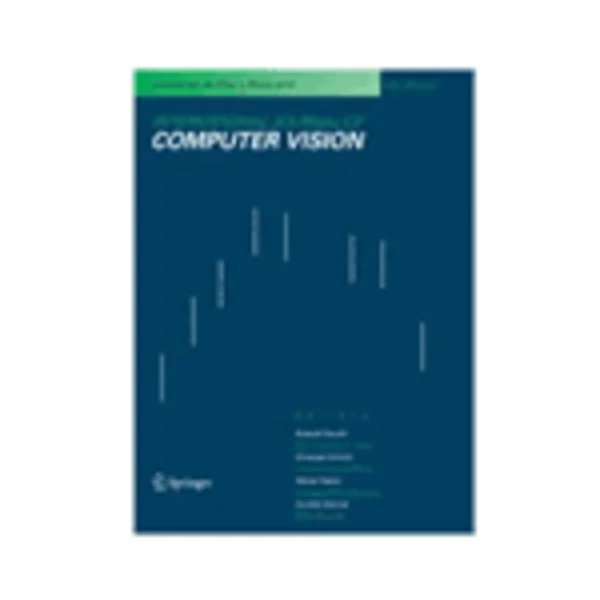-
domain adaptation for structured regression
جزئیات بیشتر مقاله- تاریخ ارائه: 1392/07/24
- تاریخ انتشار در تی پی بین: 1392/07/24
- تعداد بازدید: 971
- تعداد پرسش و پاسخ ها: 0
- شماره تماس دبیرخانه رویداد: -
discriminative regression models have proved effective for many vision applications (here we focus on 3d full-body and head pose estimation from image and depth data). however, dataset bias is common and is able to significantly degrade the performance of a trained model on target test sets. as we show, covariate shift, a form of unsupervised domain adaptation (usda), can be used to address certain biases in this setting, but is unable to deal with more severe structural biases in the data. we propose an effective and efficient semi-supervised domain adaptation (ssda) approach for addressing such more severe biases in the data. proposed ssda is a generalization of usda, that is able to effectively leverage labeled data in the target domain when available. our method amounts to projecting input features into a higher dimensional space (by construction well suited for domain adaptation) and estimating weights for the training samples based on the ratio of test and train marginals in that space. the resulting augmented weighted samples can then be used to learn a model of choice, alleviating the problems of bias in the data; as an example, we introduce ssda twin gaussian process regression (ssda-tgp) model. with this model we also address the issue of data sharing, where we are able to leverage samples from certain activities (e.g., walking, jogging) to improve predictive performance on very different activities (e.g., boxing). in addition, we analyze the relationship between domain similarity and effectiveness of proposed usda versus ssda methods. moreover, we propose a computationally efficient alternative to tgp (bo and sminchisescu2010), and it’s variants, called the direct tgp. we show that our model outperforms a number of baselines, on two public datasets: humaneva and eth face pose range image dataset. we can also achieve 8–15 times speedup in computation time, over the traditional formulation of tgp, using the proposed direct formulation, with little to no loss in performance.
مقالات جدیدترین رویدادها
-
استفاده از تحلیل اهمیت-عملکرد در ارائه الگوی مدیریت خلاقیت سازمانی و ارائه راهکار جهت بهبود
-
بررسی تاثیر ارزش وجوه نقد مازاد بر ساختار سرمایه شرکت های پذیرفته شده در بورس اوراق بهادار تهران
-
بررسی تأثیر سطح افشای ریسک بر قرارداد بدهی شرکت های پذیرفته شده در بورس اوراق بهادار تهران
-
بررسی تأثیر رتبه بندی اعتباری مبتنی بر مدل امتیاز بازار نوظهور بر نقد شوندگی سهام با تأکید بر خصوصی سازی شرکت ها
-
تأثیر آمیخته بازاریابی پوشاک ایرانی بر تصویر ذهنی مشتری پوشاک ایرانی (هاکوپیان)
-
تصویربرداری در دندانپزشکی ایمپلنت، ضرورت استفاده از روش های چند بعدی برای تعیین محل ایمپلنت
-
بررسی پتانسیل نئوپلازی خال سباسه
-
تاثیر بی نظمی در تحلیل دینامیکی فزاینده
-
effect of a vertical fracture on horizontal unsaturated seepage flow
-
effect of nutrition and harvesting time on phenolic compounds and antioxidant properties of peppermint (mentha piperita l.)
مقالات جدیدترین ژورنال ها
-
مدیریت و بررسی افسردگی دانش آموزان دختر مقطع متوسطه دوم در دروان کرونا در شهرستان دزفول
-
مدیریت و بررسی خرد سیاسی در اندیشه ی فردوسی در ادب ایران
-
واکاوی و مدیریت توصیفی قلمدان(جاکلیدی)ضریح در موزه آستان قدس رضوی
-
بررسی تاثیر خلاقیت، دانش و انگیزه کارکنان بر پیشنهادات نوآورانه کارکنان ( مورد مطالعه: هتل های 3 و 4 ستاره استان کرمان)
-
بررسی تاثیر کیفیت سیستم های اطلاعاتی بر تصمیم گیری موفق در شرکتهای تولیدی استان اصفهان (مورد مطالعه: مدیران شرکتهای تولیدی استان اصفهان)
-
اثبات و یأس از اثبات
-
جایگاه کارآموزی در توسعه مهارت الکترونیکی
-
ارائه مدلی یکپارچه از تعریف و ابعاد هویت مکان و تعیین شاخص های سازنده هویت؛ نمونه مورد مطالعه: ساکنین شهر شیراز
-
بررسی اجمالی اثربخشی سازمانی
-
improving equipment reliability and system maintenance and repair efficiency




سوال خود را در مورد این مقاله مطرح نمایید :